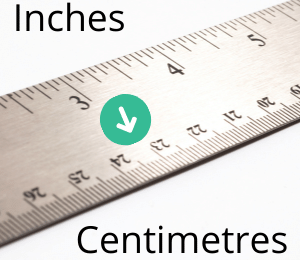Nature has blessed us with an array of magnificent creatures, each uniquely adapted to their environment. Among the agile inhabitants of the wild, the deer stands out as a symbol of grace and speed. Revered for its exceptional swiftness, the deer has captivated our imaginations for centuries. In this blog post, we embark on a journey to explore the remarkable speed of a deer and delve into the fascinating characteristics that enable these majestic animals to navigate their surroundings with unparalleled agility.
The Need for Speed:
When it comes to the animal kingdom, the concept of speed serves multiple purposes. For deer, being swift is crucial for survival. Their natural predators, such as wolves or big cats, often rely on stealth and speed to capture their prey. Consequently, deer have evolved to possess an impressive repertoire of skills that allow them to swiftly evade danger.
A Tale of Two Species:
While there are numerous deer species worldwide, two, in particular, are renowned for their remarkable speed: the white-tailed deer (Odocoileus virginianus) and the red deer (Cervus elaphus). The white-tailed deer, commonly found in North and South America, is renowned for its ability to reach extraordinary speeds. On the other hand, the red deer, which roams across Europe and parts of Asia, also possesses impressive velocity, albeit not matching that of its white-tailed cousin.
Running with Grace:
White-tailed deer, often celebrated as the fastest deer species, can achieve speeds of up to 35 to 40 miles per hour (56 to 64 kilometers per hour) in short bursts. This acceleration is a sight to behold, as these magnificent creatures gracefully navigate the terrain. While they cannot maintain these speeds over long distances, they excel at short sprints, enabling them to evade predators swiftly.
Adaptations for Speed:
To achieve such remarkable velocity, deer have evolved a combination of physical adaptations that optimize their running capabilities. Their long, slender legs provide the necessary leverage for rapid movement, while the structure of their hooves and the flexibility of their joints allow them to maintain stability on various terrains. Additionally, their lean bodies and powerful muscles contribute to their exceptional burst of speed.
The Role of Senses:
Speed is not solely dependent on physical attributes; the keen senses of deer also play a crucial role. Their acute eyesight enables them to detect even the slightest movement, allowing them to react quickly to potential threats. Their large ears act as natural amplifiers, picking up the faintest sounds of danger. These heightened senses, combined with their agility, create a formidable defense mechanism.
Running the Course of Evolution:
The ability to run swiftly has been ingrained in the deer’s evolutionary journey. Over time, natural selection favored individuals with greater speed, leading to the refinement of their physical attributes and the development of strategies that enhance their survival. The interplay between genetics, natural selection, and environmental factors has played a significant role in shaping the deer’s exceptional speed.
How to calculate the speed of a deer
Calculating the exact speed of a deer in the wild can be challenging due to various factors such as terrain, weather conditions, and the deer’s behavior. However, you can estimate its speed using some basic techniques. Here’s a simple method to calculate the speed of a deer:
- Choose a suitable observation point: Find a location that provides a clear line of sight, preferably on flat ground, where you can observe the deer as it moves.
- Measure a known distance: Identify two points along the deer’s path that are relatively far apart and easily distinguishable, such as two trees or landmarks. Measure the distance between these two points using a measuring tape or by estimating based on known distances.
- Time the deer’s movement: As the deer begins to move between the two points, start a stopwatch or use a timer on your smartphone to measure the time it takes for the deer to cover the known distance. Make sure to start and stop the timer precisely as the deer crosses the reference points.
- Calculate the speed: To determine the deer’s speed, divide the known distance by the time it took to cover that distance. For example, if the distance between the two reference points is 200 meters and the deer took 10 seconds to cover that distance, the calculation would be:
Speed = Distance / Time Speed = 200 meters / 10 seconds Speed = 20 meters per second
Convert the speed to a more commonly used unit like kilometers per hour (km/h) or miles per hour (mph) if desired.
Keep in mind that this method provides an approximate speed since it relies on your ability to accurately measure time and distance. Additionally, deer are known for their agility and may not maintain a constant speed throughout their movement. Nevertheless, this technique should give you a reasonable estimation of a deer’s speed during a specific segment of its movement.
Remember, when observing or attempting to measure the speed of wildlife, always prioritize your safety and maintain a respectful distance from the animals.
Conclusion:
Witnessing the breathtaking speed of a deer in motion is an awe-inspiring experience. From their long, agile legs to their acute senses, these remarkable creatures have evolved a set of adaptations that allow them to move with incredible grace and velocity. The combination of physical attributes, sensory acuity, and evolutionary history has granted deer the ability to navigate their surroundings swiftly, evading potential dangers with remarkable finesse.
As we continue to unravel the mysteries of the animal kingdom, the speed of a deer serves as a reminder of the incredible diversity and adaptability found in nature.
FAQs
Q: How fast can a deer run?
A: The speed at which a deer can run depends on several factors, including the species of deer and the specific circumstances. Generally, white-tailed deer, one of the fastest deer species, can reach speeds of up to 35 to 40 miles per hour (56 to 64 kilometers per hour) in short bursts.
Q: Can a deer maintain its top speed for long distances?
A: No, deer cannot sustain their top speed for long distances. While they are capable of impressive bursts of speed, they primarily use their speed to evade predators in short sprints rather than for endurance running.
Q: What enables deer to run so fast?
A: Deer possess a combination of physical adaptations that contribute to their remarkable speed. They have long, slender legs that provide leverage, flexible joints that aid in stability, and strong muscles for powerful bursts of speed. Additionally, their keen senses, such as sharp eyesight and acute hearing, play a vital role in their ability to react quickly to potential threats.
Q: Are all deer equally fast?
A: No, different species of deer may have varying levels of speed. While white-tailed deer are often celebrated for their exceptional speed. Other deer species, such as the red deer, also possess considerable velocity but may not match the top speed of white-tailed deer.
Q: How can I measure the speed of a deer?
A: Measuring the exact speed of a deer in the wild can be challenging. One method is to observe the deer as it moves between two distinguishable points. Hence, measure the known distance between those points, and time how long it takes for the deer to cover that distance. By dividing the distance by the time, you can estimate the deer’s speed during that particular segment of its movement.
Q: Do deer always run at top speed when they move?
A: No, deer do not always run at their maximum speed. Like many animals, deer adjust their speed based on the circumstances. They may move at a slower pace when grazing or walking cautiously, but when startled or chased by a predator, they can quickly accelerate to their top speed to escape danger.



